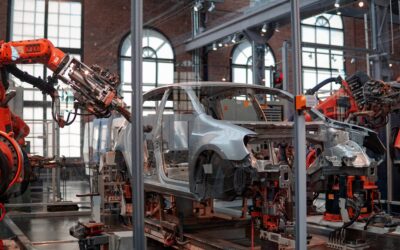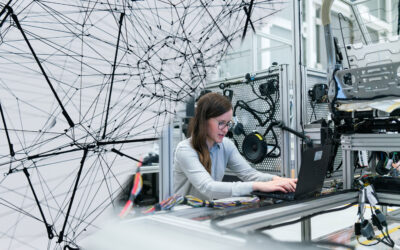Artificial intelligence (AI) is increasingly finding its way into the production halls of industry – after all, it promises fast and simple automation of complex tasks. We regularly hear the terms machine learning or deep learning. We provide clarity between the terms – and show, in collaboration with our AI expert Wolfgang Andris, what is important in image processing.
Artificial intelligence, machine learning, deep learning – it is not always easy for even seasoned experts to precisely distinguish between these three. In this article, we would like to use their differences to show how they can be sensibly used in industrial machine vision.
Collective term AI
The overarching category for a wide variety of intelligent applications and functions today is the term “Artificial Intelligence”. Accordingly, AI refers to the attempt to artificially imitate human decision-making ability. Behind it are complex algorithms that can solve given problems on their own thanks to numerous dependencies and considerations.
Artificial intelligence can also be realized with classical machine vision. For a simple inspection task, for example, such a system can recognize a circular shape and calculate its diameter. If this is not within a specified tolerance, the workpiece is subsequently sorted out. The system thus makes intelligent decisions – based on classic image processing algorithms.

Artificial intelligences in comparison
Solving classification tasks with machine learning
For classification tasks, these classical machine vision methods can be supplemented with machine learning methods. This includes, for example, support vector machines, a method for pattern recognition. In practice, developers first use “hand-crafted features”, i.e. individual features of the image that are calculated using classic machine vision algorithms. Only then does machine learning come on the scene and exploit these features to make a calculated decision.
These machine learning techniques therefore use the data from a previously performed classical machine vision process in order to subsequently apply machine learning techniques to it. These machine learning algorithms do not need the original image; they are merely based on the intermediate results of the machine vision process. Only with this knowledge do the algorithms behind it make the right decisions.
Deep Learning for advanced recognition performance
Recently, however, Deep Learning has advanced to become the most relevant form of Artificial Intelligence. This “deep learning” is said to resemble human intelligence more closely than previous concepts: Algorithms weight and evaluate incoming data across myriad parameters, many of which are connected. This network is often associated with the nerve connections in the human brain – hence the term neuronal networks.
When neural networks and Deep Learning are used, almost no classical machine vision algorithms are employed. Instead, Deep Learning algorithms access raw data from the camera almost directly. Depending on the task, the raw data is subjected to preprocessing, for example, to subdivide an image into different sections in order to highlight individual relevant points. A neural network reliably detects errors and deviations in the image data. In addition, it independently learns the degree to which workpieces are defective – and works more precisely than many human inspectors.
Furthermore, Deep Learning-supported machine vision is able to distinguish harmless dirt from defects. In this way, the number of false positives can be effectively and reliably minimized. It turns out that where classical approaches to image processing would fail, neural networks expand the realm of possibility. In this way, tasks can be solved that would be unthinkable using classical methods.
Deep Learning and neural networks thus set the current industry standard in the intelligent automation of complex tasks. For machine vision, this opens up new, exciting possibilities in the recognition and inspection of workpieces.
Use AI and neural networks for visual quality inspection of metallic and complex workpieces



